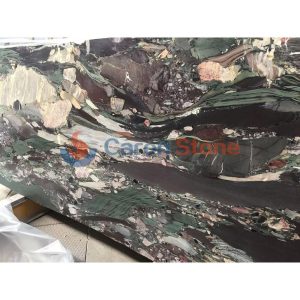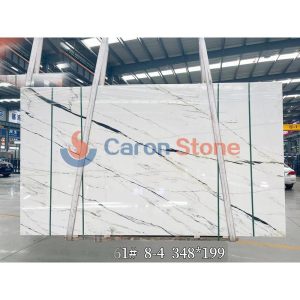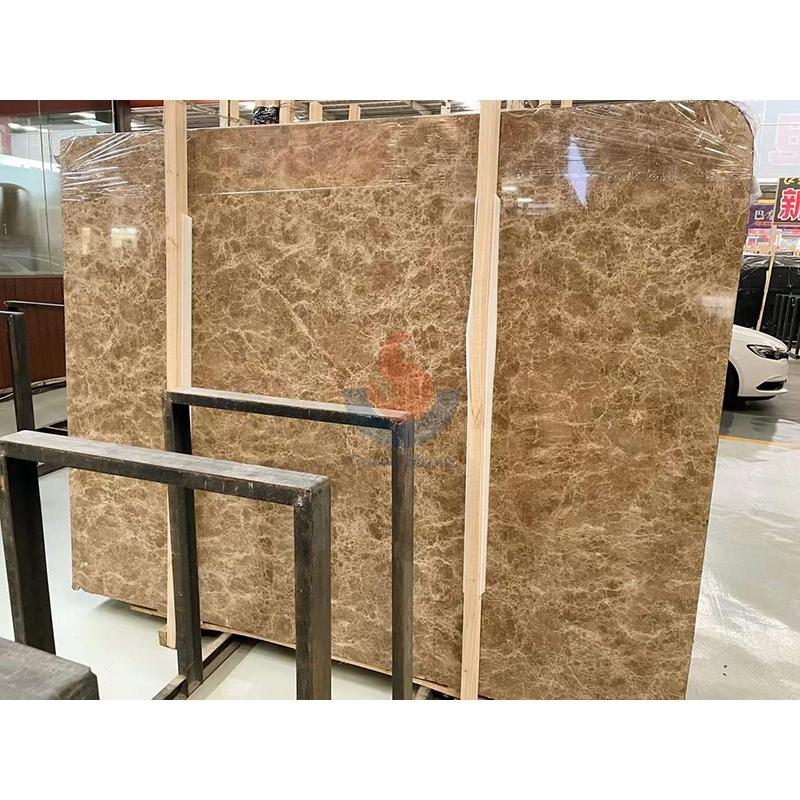One finds increased use of stone counters. They are not only extensively used in hotels, hotels, and commercial office buildings but also in homes, particularly in TVs, coffee tables, counters of different furniture, and kitchen cabinets, and they are very adored by home decoration. Although stone countertop products lack particularly sophisticated processing technologies, there are some processing aspects to consider when handling them.

Les Quatre Saisons four season Marble
When handling the marble countertop, these eight elements are the ones one should pay attention to. Ignoring them during processing will result in extremely poor quality of the processed countertop, therefore compromising the decorative impact of the marble countertop. Therefore, the processing details of the countertop cannot be neglected during the processing of the countertop, and special attention should be paid.
(1). The color and texture of the thickened edge and the marble countertop are basically consistent.
This requirement is mainly controlled during cutting and bonding. The bridge cutter should be careful while cutting the countertop and thickened strip since the countertop and the thickened strip are ideally chosen from the same broad board and cut at the same spot. Should the board need to be reduced from another sizable board due to inadequate huge boards, the color and texture must be matched and the board must be cut where the color and texture are essentially identical. Following their cutting, the adhesive strip and the countertop are numbered by set and arranged in matching pairs. The bonding worker of the thickened strip should first examine the color and texture of the adhesive strip and the countertop, then bond them when the color and texture of the adhesive strip match.
(2). The color and texture of the water retaining plate and the marble countertop are consistent.
Use a water retaining plate to cut the countertop; follow the guidelines (1), number them set, and arrange them set. The board arranging staff meticulously arranges the boards by set, checks, colors, numbers, marks the direction of edge grinding, and so on.
(3). The size of the bonding gap between the thickening strip and the marble countertop
Check the color of the marble countertop and the thickening strip to be sure their textures and colors are essentially the same before joining. Otherwise, once bonded together, if the color and texture of the thickening strip and the countertop are too different, it will greatly affect the decorative effect. Bonding the countertop makes extensive use of clamps. When the bottom surface of the marble countertop is severely damaged, the broken edge is eliminated by mechanical thickness setting or manual grinding to ensure a small bonding gap and good bonding effect; this helps to increase the bonding force between the thickening strip and the countertop and so close the gap between them.
(4). The color of the bonding gap between the thickening strip and the marble countertop
A professional glue mixing master mixes the glue in line with the main hue of the stone countertop. One mixes the glue precisely in line with the glue ratio. After the glue is prepared, try bonding one piece first. Once it sets for one hour, wipe the bonding surface and see if the glue’s color satisfies criteria. Bond in great volumes if the glue’s color satisfies criteria.
Every time, the quantity of glue ready should not be excessive. It is best to prepare it according to the needs. One should not use the ready glue over night.
Careful cleaning of the bonding surface will help to guarantee that there is no dust, dirt, or other element influencing the glue’s color on the surface of bonding. Use a single-sided blade to scrape out the glue if its color at the bonding seam is off-target and re-mix the glue to fix it.
(5). The quality of glue repair of marble countertops
Stone products like counters come into close touch with people’s view. Apart from the surface’s numerous fissures, the quality of glue repair of marble countertops defines the marble countertop quality and influences their pricing, grade, and grade of integrity. In addition to careful and meticulous repair during the processing of large panels, the quality of glue repair of countertops should also be carefully handled during the processing of marble countertops. One should dig out and re-repair the flaws in glue repairs.
(6). Quality of edge grinding of marble countertops
Mechanized edge grinding is ideal if one wants the edge grinding of countertops. Should it not be possible with mechanical edge grinding, it should be made using a forming wheel and subsequently finished by hand by workers with great polishing and grinding ability.
(7). Requirements for color and texture of marble countertops with splicing relationships
Before cutting, one should design countertops with splicing relationships in terms of color and texture. The employees who arrange the boards should check the color and texture according to the sets, find problems in time, and replace the parts with different colors and textures; the bridge cutters should cut the boards strictly according to the material planning of the countertops, cut the boards according to the sets, and number them. Set determines the quantity of the ordered and examined panels; they are then moved to the next procedure in set order.

Orential Calacatta White chinese white marble
(8). Strengthen the strict inspection and testing of marble countertops
The processed countertops are arranged by sets, inspected and tested. The quality and effect of the glue seam and color of the countertops; the straightness of the edge grinding; the countertops with water barriers are numbered and packaged; the surface glue quality of the countertops and whether there are wear marks and scratches on the surface; the color and texture of the thickened strips of the countertops; the countertops





